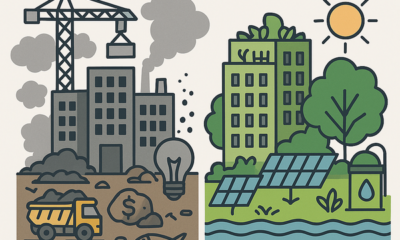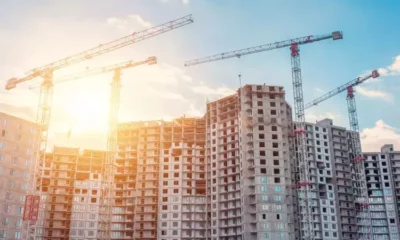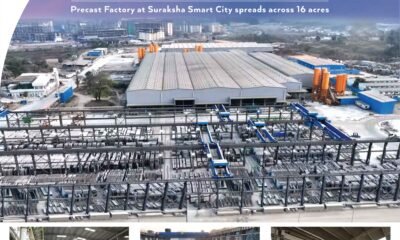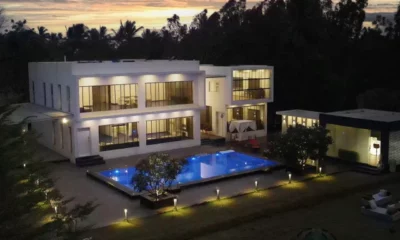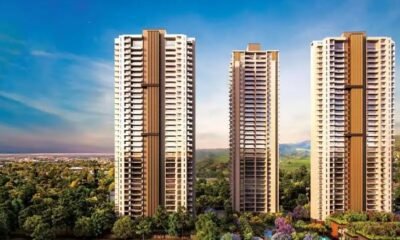Guest Column
Sustainability – Integrating Traditional and Modern Architecture


Vice Chairman – ANAROCK Property Consultants
Santhosh Kumar, Vice Chairman – ANAROCK Property Consultants
The built environment of any community is considered to be the reflection of regional architecture – and thereby a significant component of differentiation. In the pre-Industrial Revolution phase, India’s built environment, as in the rest of the world, was shaped by certain values and cultural beliefs. However, with tremendous urbanization and globalization after the Industrial Revolution, India’s rich cultural and architectural heritage is vanishing. This is primarily due to increased usage of industrially-produced and standardized materials. With that, the dependency on locally-available materials has declined, transforming ‘vernacular architecture’ buildings to more standardized modern concrete structures.
Vernacular architecture refers to structures built indigenously to a specific time or place, taking into consideration the experience of centuries of community building. It depicts the characteristics of the local environment, technology and climatic conditions. Importantly, buildings constructed through traditional techniques using natural, locally-sourced, non-toxic, renewable and biodegradable materials can also minimize negative ecological impacts.
Modern architecture, on the other hand, uses industrially-produced materials (such as steel and concrete) that possess a low thermal resistance and require high energy intensity, thereby causing a considerable impact on the environment due to substantial energy consumption. Modern structures consume around 10-15% more energy compared to vernacular ones.
How ‘vernacular architecture’ differs from the modern architecture
Integrating modern and vernacular architecture in contemporary designs
With the escalating ecological crisis across the world, there is a mounting threat to traditional and cultural values. Unplanned development that disregards local beliefs, culture and values has led to a widespread socio-economic imbalance. To make our communities more sustainable, vernacular elements need to be incorporated into contemporary town or city planning.
Various initiatives are being taken by Earth Summit, National Habitat Mission, JNNURM, Water mission and Energy Efficiency mission to create culturally supportive communities. After all, vernacular traditions enhance not only social inclusion but also citizens’ quality of life.
Already, we are seeing an increasing focus on harvesting rainwater, and preserving and promoting recycling and reuse. However, despite the challenges such as the provision of the built fabric in relation to the surrounding urban form, emphasis must also be given on building structures in response to the respective climatic conditions – structures which are energy-efficient and use natural, renewable materials such as mud and timber.
Case studies of integration of vernacular and modern architecture
Various architects, planners and policymakers are working on a more integrated design for the betterment of societies of the future. The use of natural resources is being encouraged by substituting concrete, cement and energy-intensive materials with sun, water, wind and soil. Here are some of the urban structures in India where both vernacular and modern architectures have been incorporated:

 News3 weeks ago
News3 weeks agoSpectrum@Metro Brings Biggest Dandiya Night to Noida on September 27

 News4 weeks ago
News4 weeks agoSuraksha Group Leads Mechanization of Construction With One of Asia’s Largest Captive Precast Factories

 Guest Column4 weeks ago
Guest Column4 weeks agoThe Connectivity Game: How Expressways are Redefining Urban Aspirations

 Guest Column3 weeks ago
Guest Column3 weeks agoWhat Homebuyers Should Know Before Choosing to Invest in Tier-II Cities

 Guest Column4 weeks ago
Guest Column4 weeks agoFarmstays Redefine Concept Of Experience-Driven Real Estate Across India

 Guest Column3 weeks ago
Guest Column3 weeks agoThe Infrastructure Effect: Jewar Airport, Metro Drive Luxury Housing Boom in Noida-Greater Noida

 News4 weeks ago
News4 weeks agoThe Omaxe State Hosts Prestigious BRICS CCI Gala Event on Mega Sports Cities

 News4 weeks ago
News4 weeks agoSky-High Luxury or Ground-Level Grace? Decoding Gurugram’s Housing Revolution



